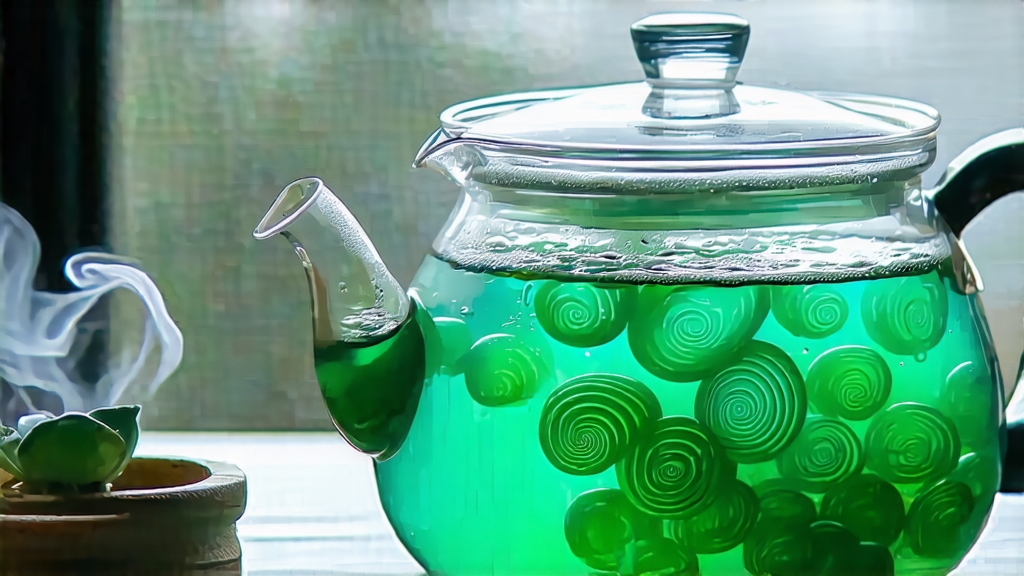
Tucked between the mist-capped hills of Dongting Mountain and the gentle ripples of Taihu Lake in Jiangsu Province, Biluochun—literally “Green Snail Spring”—has for three centuries been the quiet jewel of Chinese green tea. International drinkers often meet it as a delicate name on a menu, yet behind each tiny spiral lies a micro-saga of imperial taste, Daoist ecology and artisan finger-tip alchemy. This essay invites the global tea lover to travel beyond the label, tracing the cultivar’s journey from Tang-dynasty wild leaf to contemporary gongfu staple, decoding the craft that turns one bud-and-leaf pair into a perfume that can outlast three infusions, and finally offering practical steps to brew, evaluate and even age this most fragile of Chinese greens.
Historical echoes
The earliest written record appears in the Tang Dynasty’s “Tea Canon” as “Xia Sha Ren Xiang” (Astounding Fragrance), a wild tea picked by hill villagers who noticed its brew calmed fever and perfumed the entire valley. Legend credits a nun who wandered the Dongting peaks in 1675; she plucked the tender shoots, pan-fired them in an iron alms bowl and presented the curled result to the Kangxi Emperor during his southern inspection tour. The monarch, startled by the aroma that “spirals like a jade snail yet blooms like early spring,” renamed it Biluochun and decreed it an annual tribute. By the late Qing the tea had overtaken Longjing in court price records, fetching its weight in silver. Republican-era growers refined the cultivar into two distinct ecotypes: the original “Dongting Mountain Small-Leaf” and the later “Fuding Large-Leaf” transplanted for higher yield. Today the State Council protects 13,000 mu (866 ha) of core-origin gardens as a National Agricultural Heritage Site, ensuring that every authentic leaf is born within the lake’s microclimate where 17.5 °C average temperatures, 80 % humidity and diurnal mountain fogs slow photosynthesis, concentrating amino acids and floral volatiles.
Cultivar and terroir
Biluochun is not a single plant but a clonal family selected for tiny leaves, high catechin-to-theanine ratio and a unique terpene profile rich in linalool and geraniol. The choicest grade, “Qingming Seven-Minute Fire,” is picked seven days before the solar term Qingming, when the bud measures 1.2–1.5 cm and still hides within a translucent shrimp-green scale. Each kilo of finished tea demands 60,000 such shoots, all plucked between 5 a.m. and 9 a.m. while dew is intact; after 10 a.m. the rising sun converts soluble sugars to cellulose, flattening sweetness. The lake itself acts as a vast reflector, bouncing dawn light onto the underside of leaves and encouraging chlorophyll-b development that gives the brewed liquor its hallmark “moss-jade” glow.
Craft: the five breaths of fire
Unlike Longjing’s flat press or Taiping Houkui’s orchid shape, Biluochun is hand-knotted into spiral snails during a simultaneous kill-green and rolling step locals call “one breath, five lives.” A 200 °C copper wok is first breathed upon by the tea master to test residual heat; if his saliva evaporates in under three seconds the temperature is right. Leaves are tossed for 3–4 minutes until the grassy volatilization point (often smelled as fresh-cut hay) subsides. Immediately the master shifts to “tremble-rub,” rolling the bud against the wok’s wall with three fingers while the other hand fans cool air—this thermo-shock fixes the green color and initiates the curl. A second firing at 150 °C reduces moisture to 30 %, followed by a cooler 90 °C “scent-lock” phase where spiral tension is finalized. Finally a gentle 60 °C “charity fire” dries the core to 6 % moisture without baking the surface, preserving the fuzzy white tips that resemble miniature moth antennae. The entire choreography must finish within 40 minutes; any delay oxidizes the edges, turning the aroma from apricot blossom to over-ripe banana.
Grading lexicon
Western buyers often meet four commercial grades: Supreme (60 % buds, 40 % single leaf), Grade 1 (50/50), Grade 2 (30 % buds) and